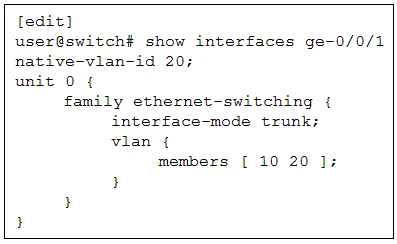A Junos device learns about MAC addresses when it is first connected to an Ethernet LAN by listening to the traffic on each of its interfaces. As traffic flows through the device, it observes the source MAC addresses of the frames arriving on each interface. The Junos device then associates each MAC address it observes with the specific interface from which it received the traffic. This information is stored in the Ethernet switching table (also known as the MAC address table) of the device. By observing the source MAC addresses in the incoming frames, the device builds its understanding of which MAC addresses are reachable via which interfaces.
By default, an IS-IS interface has a maximum metric value of 63. When wide metrics are configured, an IS-IS interface can have a maximum metric value of around 16 million. These configurations enable IS-IS to handle larger networks and more complex topologies by allowing for higher metric values.
IBGP neighbors must use the same AS number because they are within the same autonomous system. By default, the TTL on protocol-related packets for internal neighbors (IBGP) is set to 1 to help prevent BGP packets from traveling beyond the local autonomous system.

Referring to the exhibit, what will happen to untagged frames?
The interface configuration includes the command 'native-vlan-id 20', which indicates that untagged frames received on this interface will be associated with VLAN 20. In a trunk configuration, the native VLAN is used to handle untagged traffic.
In this scenario, which statement is correct about the router ID?
In OSPF configuration on Junos OS, if a router ID is not explicitly configured, the router will use the IP address assigned to the loopback interface as the router ID. If there is no loopback interface configured, then the highest IP address assigned to any active physical interface will be used.